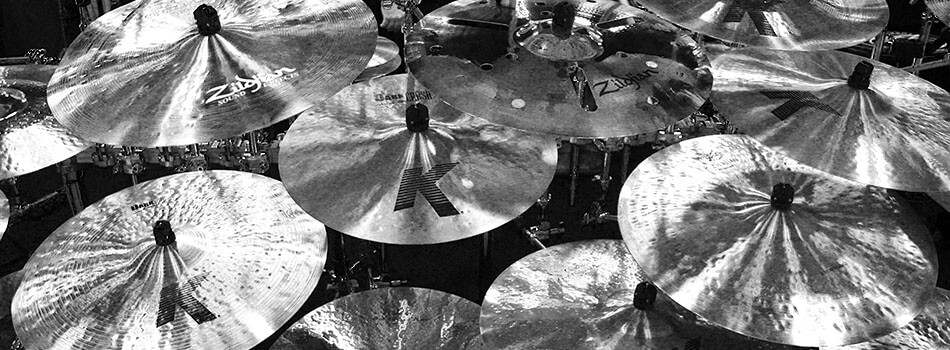How to Fix Cymbal Cracks?
You probably know the feeling already – you’re jamming to a very aggressive rock song and suddenly there is a massive crack in your cymbal!
Luckily, you’re quite handy with tools in general so you’re thinking of repairing your cymbal before spending a lot of cash on a new one.
The sad fact is that there is no real way to repair broken cymbals completely. The only thing you can do is lessen the severity of the crack or to modify your old cymbal into a different one.
First of all, the exact way of saving your cymbals will depend on how big the crack is and where it is located.
Secondly, always inspect your cymbals for smaller cracks that you maybe haven’t noticed yet, as you can maybe prevent further damage.
Let’s take a look at different types of cracks.
Center:
The worst type of crack is one around the center hole. If your cymbal has been broken at the mounting hole, you’re pretty much left with no choice except for getting a new cymbal. To prevent this type of cracks, don’t tighten the cymbals too much and use a protective sleeve over the threads of the cymbal holder.

Radial:
Radial cracks at the edge of the cymbal must be stopped from spreading further. To do this, drill a hole at the end of the crack. Smaller holes might change the sound less, but bigger holes have a better chance of stopping the spreading. A 1 inch hole might be the best solution. Also, you may want to file down the edges of the crack as the grinding of the edges can produce a harsh sound.
An even longer-lasting solution to radial cracks is to do the first steps, then cut two straight lines to the hole by using a hacksaw or strong tin snips. After you create a triangular shape, sand down all of the edges until there are no more straight angles and sharp edges.

Depending on the size of a bow crack, you can either drill in a big hole, or you can convert your cymbal into a smaller-size cymbal.
Keep in mind that 18 inch cymbals converted to 16 inch cymbals won’t sound the same as a designed 16 inch cymbal. But whether you like the sound or not will ultimately depend on you.
The last thing you could try, if you want to try really hard, is actually welding the cracks and broken spots. In fact, you might want to keep your old broken cymbal pieces so that you can use the same type of alloy for welding.
The result will, of course, depend on your welding skills and the alloys involved.
All in all, you will not be able to restore your old cymbals completely, but you might convert them into something new and interesting.
In the end, cymbals are like guitar strings, light bulbs or batteries – after a certain amount of time, they need changing. And as a final tip, if you decide to buy cymbals, getting a whole package might save you some money on the long run. We hope that you’ve enjoyed the text.
If you have more tips on repairing cymbals, share them in the comments below. And if you want to learn more about drums, visit our drum section for more articles on your favorite hobby!

